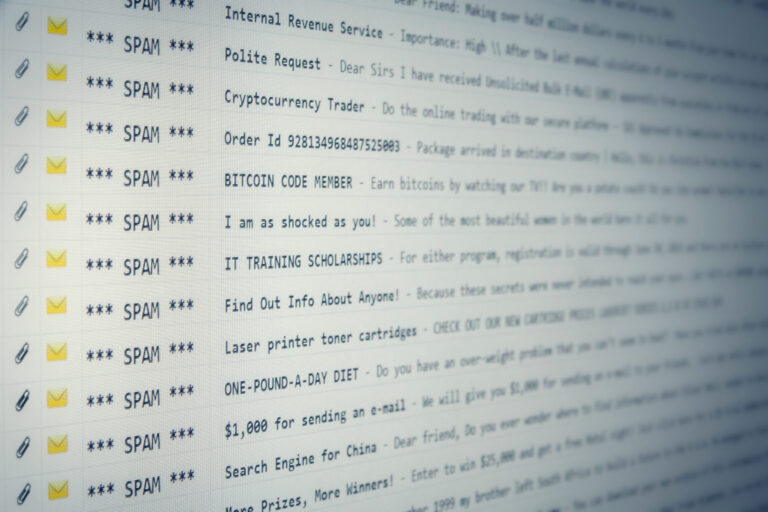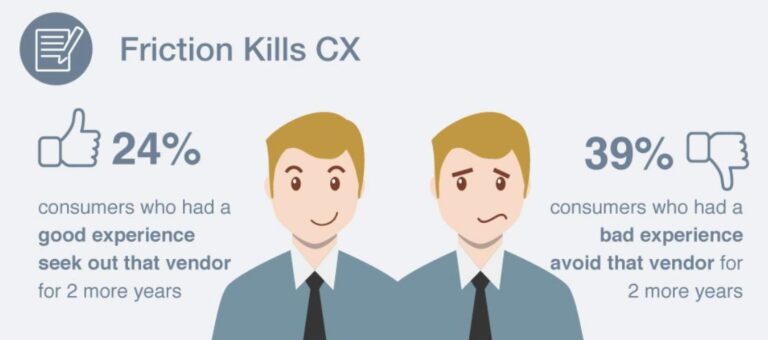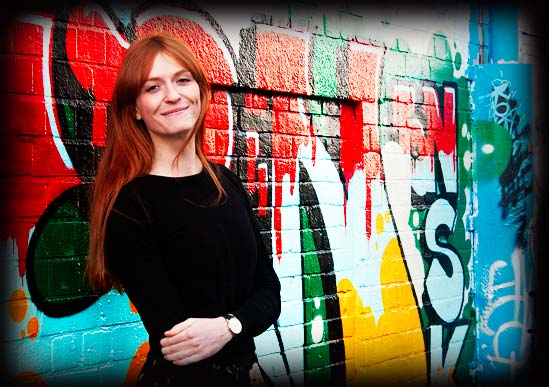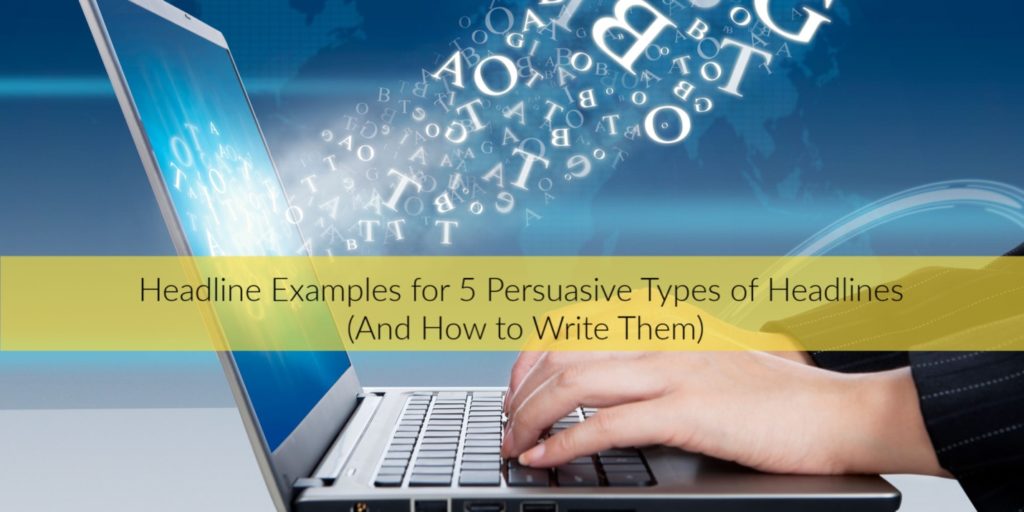
Writing headlines is a risky business. Whether for blogging, selling digital or physical products, podcast episodes, or practically any other online application, when you write headlines there is a lot at stake.
Depending on which stats you believe, the headline is read anywhere from 5 times to 76 times more than any other section of your copy/content. For example:
- David Ogilvy — On average, 5 times as many people read the headline as read the body copy.
- Copyblogger — On average, 8 out of 10 people will read headline copy, but only 2 out of 10 will read the rest.
- Buffer — 76 times more people see the headline as read the story.
Why? Because it’s the first thing your site visitors see. It only makes sense that they would read the headline first. But that puts a mountain of responsibility on your headlines. What if they are no good? What if they don’t connect?
Click.
And they’re gone.
Not all headlines are created equal. Different types of headlines work better for social media than work for emails. Let’s have a look at 5 of the best-suited headlines for web pages, landing pages, blog posts, opt-in pages and other similar content.
1.Use Popular Words
When it comes to headlines, there is a long list of words that may boost your conversion rate. I say “may” because — while there is no guarantee — these words have been proven time and again to connect with readers.
Doing a simple search for practically any topic online will probably pull up results with the words “how to.” Because this is one of the most-searched phrases, it attracts readers easily and holds their attention with a promise of fulfilling their quest for knowledge.
This headline example from WebMD is short, yet powerful because it gets straight to the gist of what readers want to know.
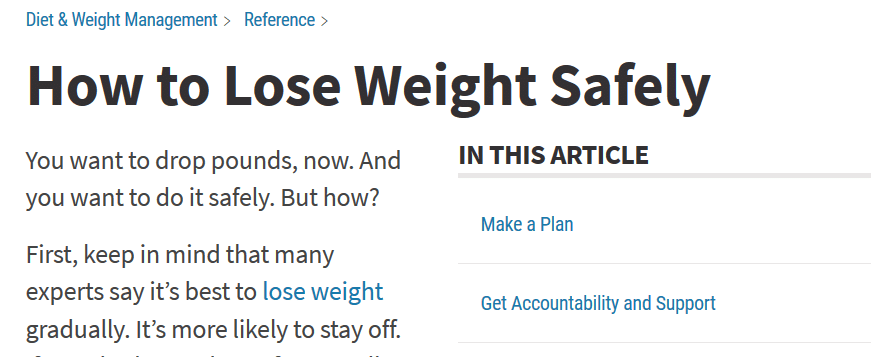
This 3-letter word answers the call for countless searches done by people who want something. Searching for car financing? One type of headline like “Get 0% Financing for 5 Years” will draw you in. Because so many of us are looking to fulfill a need, the word “get” holds value because it offers to deliver what we seek.
This headline example from Woman’s Day is right on target.

- Instant / Immediate
With the attention span of a goldfish (yes, really… there are actually studies), most online customers are hardly in the mood to wait a week, a day, or even an hour to get what they need. That’s why the words “instant” and “immediate” hold such persuasive power. They fulfill our desire for gratification right now.
Here’s a powerful headline example from OptinMonster.
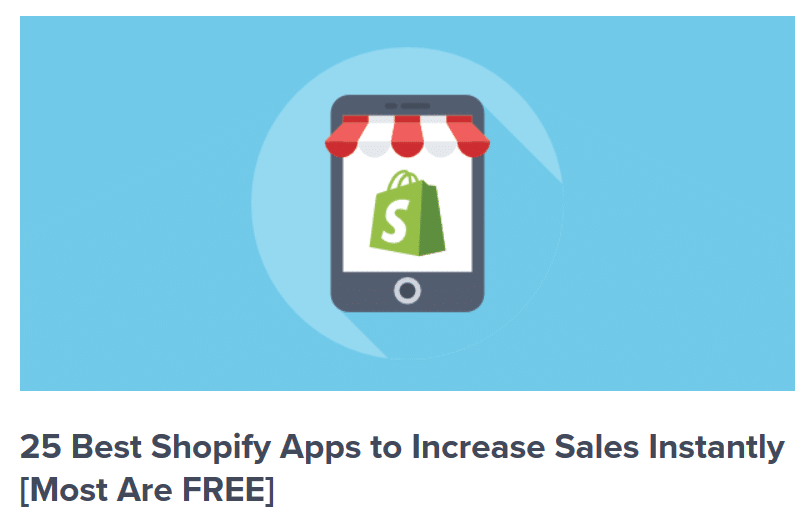
The word “because” offers justification. It delivers sound reasoning for an action all wrapped up in a single-word package. In his classic best-seller “Influence: The Psychology of Persuasion,” Dr. Robert Cialdini points out where the word “because” gets its power.
He recounts an experiment performed by Ellen Langer (Professor of Psychology at Harvard) in which she instructed people to ask to break into a line to use a copy machine. Ms. Langer gave specific instructions about what her accomplices were to say. Here are the results:
“Excuse me, I have 5 pages. May I use the Xerox machine?” [60% agreed]
“Excuse me, I have 5 pages. May I use the Xerox machine, because I have to make copies?”[93% agreed]
“Excuse me, I have 5 pages. May I use the Xerox machine, because I’m in a rush?” [94% agreed]
Using the word “because” — even if it didn’t provide a valid reason for needing to break into the line (I need to make some copies) still resulted in more people agreeing than not using the word “because.”
As humans, most of us find the “why” important. “Because” gives us the justification we need to act.
This headline example from a local veterinarian uses “because” in a personal way (although I think it should be much bigger).
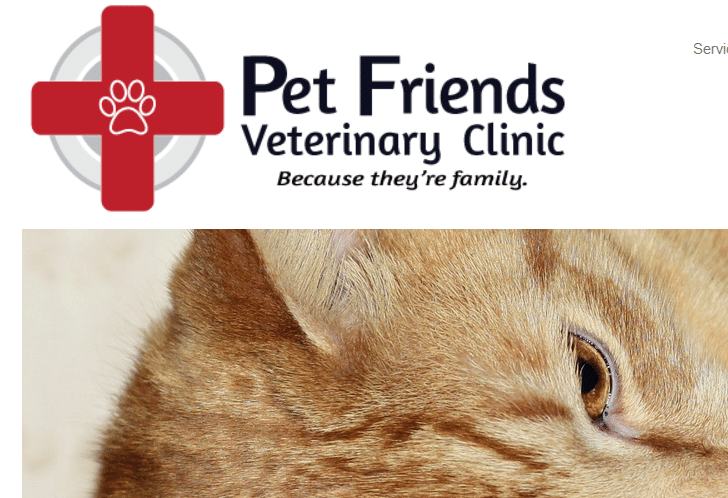
Who wants to buy something that’s hard to use? With hectic lives full of stress and complication, simple (and easy) is what we crave. You would be surprised how much of an impact including the word “simple” can have when you write headlines.
This example shows how a simply stated headline (that uses the word “simple”) can inspire action.
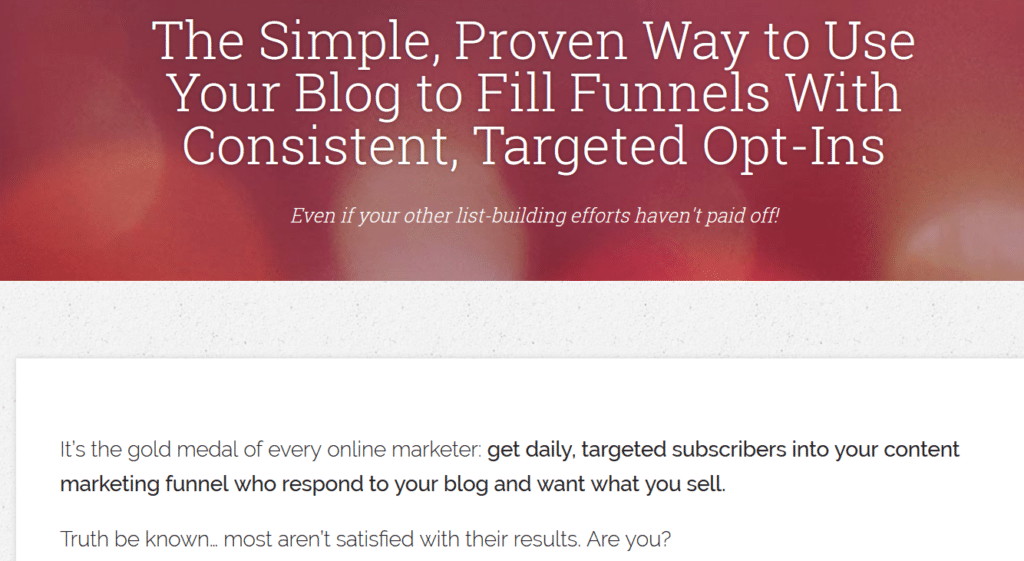
2.Solve a Problem / Provide a Solution
Digital Marketing Strategist Cindy Bidar does a phenomenal job with this headline. It offers a solution to the age-old struggle business people face when it comes to marketing.
Many online entrepreneurs, small-business owners, and others have the issue of knowing their company and their trade inside and out. However, when it comes to marketing their businesses, things can get frustrating.
In the example below, Cindy is careful to solve this problem with specific wording, including “streamline,” “easy-to-implement,” “rinse-and-repeat” and “copy & paste.” Doesn’t that make this solution seem spectacular? Yes… and that’s exactly the point.
/* .tcb-flex-col { padding-left: 0px; }[data-css=”tve-u-15ffce478e557d”] { padding: 10px !important; margin-bottom: 0px !important; }:not(#tve) [data-css=”tve-u-175ffce478e558d”] button { font-size: 22px; border-color: rgb(57, 60, 59); background-image: none !important; background-color: rgb(216, 68, 97) !important; }[data-css=”tve-u-105ffce478e5586″] { font-family: Verdana, Geneva, sans-serif !important; font-size: 26px !important; color: rgb(216, 68, 97) !important; }:not(#tve) [data-css=”tve-u-95ffce478e5585″] { line-height: 1.5em !important; }:not(#tve) [data-css=”tve-u-115ffce478e5587″] { line-height: 1.5em !important; font-size: 1px !important; }}@media (max-width: 767px){[data-css=”tve-u-195ffce478e558f”] { text-align: center; background-image: none !important; }[data-css=”tve-u-25ffce478e557e”] { background-image: none !important; }[data-css=”tve-u-55ffce478e5581″] { padding-top: 0px !important; }[data-css=”tve-u-45ffce478e5580″] { background-image: none !important; margin-bottom: 0px !important; }[data-css=”tve-u-75ffce478e5583″] { background-image: none !important; }[data-css=”tve-u-15ffce478e557d”] { padding-bottom: 20px !important; margin-bottom: 0px !important; padding-left: 10px !important; padding-right: 10px !important; }[data-css=”tve-u-85ffce478e5584″] { padding: 10px 0px !important; background-image: none !important; }[data-css=”tve-u-165ffce478e558c”] { max-width: 336px; margin-top: 0px !important; padding-top: 0px !important; margin-right: auto !important; margin-left: auto !important; background-image: none !important; }}
/*]]>*/
/**/
These 5 Words Can Make or Break Your Marketing Results
Ready for more clicks, increased engagement & better results from all your marketing? It’s time to beef up your short copy. Discover 5 words that add power & persuasion to headlines, titles, subject lines, bullets, calls-to-action and more.

I understand that I will also receive weekly articles & videos plus periodic discounts, product notices & more. I can unsubscribe at any time.
However, it might also sound too good to be true. So, Cindy counteracts that potential impact with one of the best sub-heads I’ve read in a long time: Consistency Outperforms Brilliance Every Time.
Not only does this let her site visitors know that there is work involved, but it also gives the offer a since of reality.
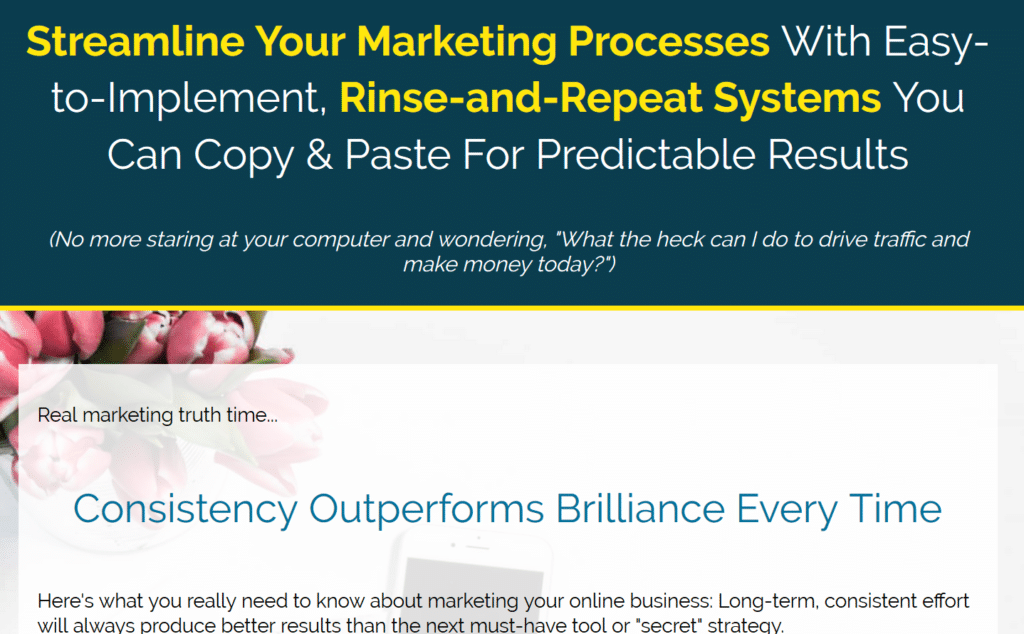
3.Do Something Without…
What’s stopping you from making more money every month? Why haven’t you dropped the weight you so badly want to lose? What is the reason your pet still won’t do her business outside?
We all have drawbacks, stumbling blocks, and challenges in almost everything we do. But what if you could reach your goals without having to worry about those things? What if the way were perfectly clear for you to walk right up and take what you want?
The word “without” or the phrase “without ever” opens the door. When used correctly, it removes the roadblocks and gives us the freedom to act without fear of struggles or failure.
Here’s an excellent headline example from Designrr.
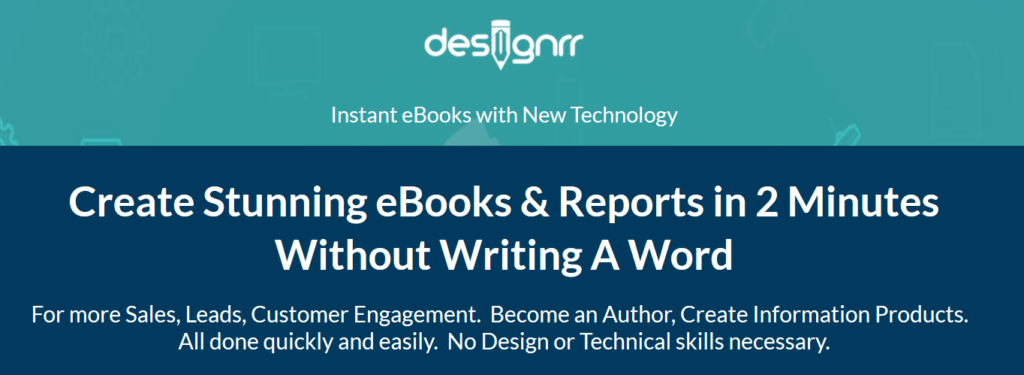
4.Clarity Over Cleverness
We often hear clients say they want a catchy headline. People naturally admire the talent involved when they write headlines that are clever. Would you be disappointed to know that clarity trumps cleverness almost every time?
That’s because — if customers can’t understand what you’re offering — they won’t continue to read. They’ll click away due to lack of interest, or confusion.
Clarity never lets you down. While you should always test your headlines, I do recommend that at least one of the options be clear and straightforward.
Thrive Leads offers a wonderful headline example here.
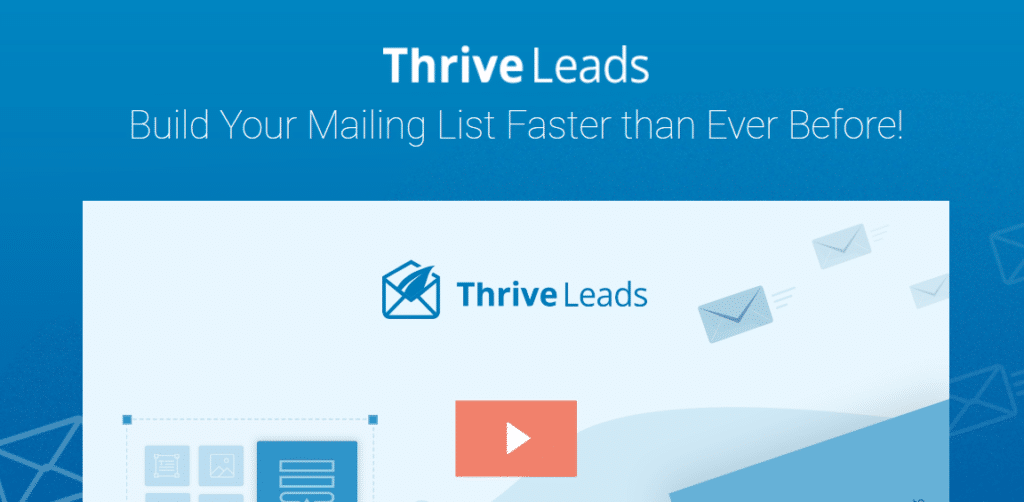
5.Be Negative
Ask any politician or reporter and they will tell you that negativity sells. The marketing industry largely agrees. That’s why types of headlines that feature negative words or statements (such as “worst” or “never”) can pull in large clickthrough rates. That’s because they tend to strike fear in the reader and engage a protective instinct that causes them to make certain they aren’t doing, saying, thinking, buying whatever you are warning them against.
This headline example from Inc.com shows you how it works.
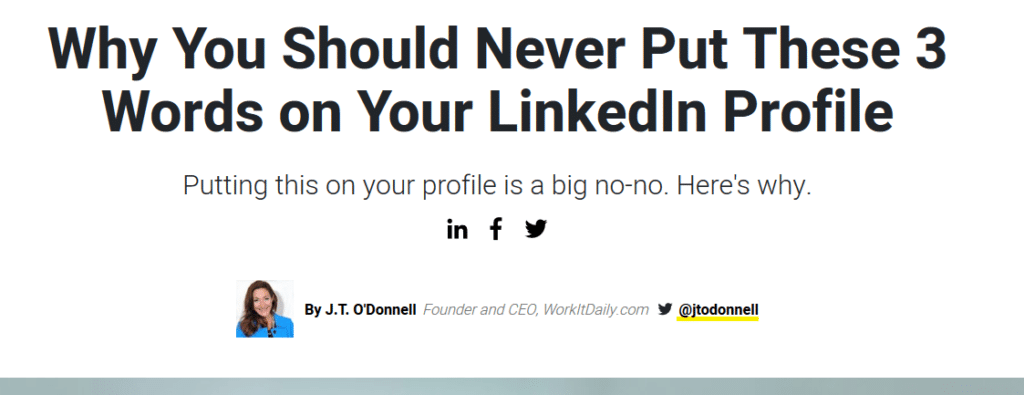
Always… Always Relate to Your Audience
Yes, when you’re learning how to write headlines, you should understand that the primary job of any headline is to get someone to take one more step. That might be opening an email, clicking a link, reading a blog post, reading the first paragraph of sales copy, etc.
However, manipulating your readers with clickbait or other headlines that promise one thing and deliver something else is a loyalty killer. Most people don’t take kindly to such treatment — to the point of abandoning you altogether.
But that’s not where the process stops. The power of headlines stops when your site visitor gets to the first paragraph of your text. Then the copy has to take over and make the sale/opt-in/conversion.
![]()
That’s something I can help you with. My Copywriting Advantage: How to Communicate, Convince & Convert copywriting course makes it easy to figure out who your audience is and how to write compelling copy specifically crafted to entice them to take action!
Isn’t it time you learned to create professional-level copy at will without frustration, overwhelm and dread? Stop struggling every time you have to write a web page. Use coupon COPYADV today and save 25%. (Offer will expire without notice.)
Have questions about these headline examples? Talk to me below.
Posts Related to How to Write Headlines
These 3 Tiny Words That Add Mystique to Your Social Posts, Blog Post Titles, Headlines & More
3 Sneaky Tips for Writing Compelling Tweets, Headlines and Other Short Copy

